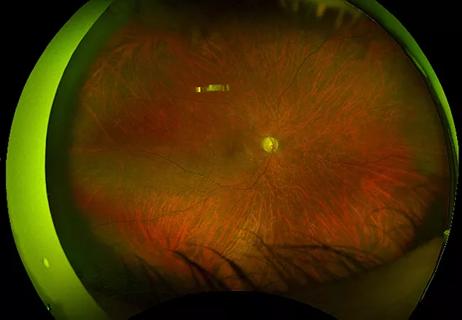Advertisement
When GCA initially presents without cranial symptoms
A 78-year-old female presented for a routine eye exam without any symptoms, but the ophthalmologist was concerned for possible optic nerve swelling. Computed tomography angiography (CTA) of the head and neck revealed a right vertebral artery abnormality suggestive of chronic dissection as well as bilateral internal carotid arteries with a few areas of stenosis, suggestive of beading. She was diagnosed with fibromuscular dysplasia and received no treatment or other imaging. She was monitored for symptoms and with yearly ultrasounds of her cervical vessels.
Advertisement
Cleveland Clinic is a non-profit academic medical center. Advertising on our site helps support our mission. We do not endorse non-Cleveland Clinic products or services. Policy
Five years later, she was referred to Cleveland Clinic for evaluation of symptoms of low-grade fever, weight loss, a mild left temporal headache and left jaw pain with chewing. A left temporal artery biopsy showed chronic inflammatory cell infiltrates in the adventitia, focal loss of the media with replacement fibrosis and neovascularization and intimal hyperplasia with loss of the internal elastic lamina.
Hear Alexandra Villa-Forte, MD, MPH, staff in the Center for Vasculitis Care and Research in Cleveland Clinic’s Orthopaedic and Rheumatologic Institute, explain what they found after a CTA of the patient’s entire aorta and how the team successfully treated the patient.
CTA of the entire aorta and its main branches showed diffuse thickening of the thoracic aorta wall suggestive of aortitis. She also had a dissection of the right iliac artery. She was treated with prednisone and toclizumab for a diagnosis of giant cell arteritis (GCA). She experienced complete resolution of her cranial symptoms.
“The key points in this case are that GCA may present with isolated involvement of large vessels in asymptomatic patients, and so its very important to obtain MRA [magnetic resonance angiography] or CTA of the entire aorta and all its main branches in all patients with suspected GCA,” says Dr. Villa-Forte.
Advertisement
Advertisement

Evidence-based therapies, monitoring, prevention and more

Holistic approach is necessary to ensure a correct diagnosis

Knowing the affected organs and vessels can help in identifying cause

When to consider the possibility of pulmonary artery involvement

Relapses are frequent even with long periods of remission

Multidisciplinary management resolves complex case

Raising awareness of a common manifestation

Prevention of progression and complications is the primary goal